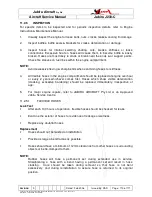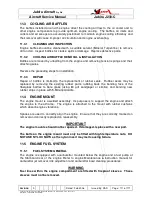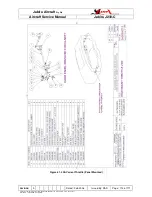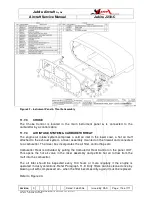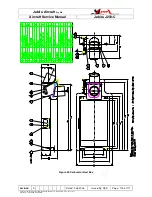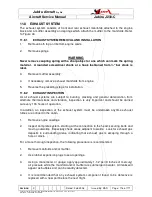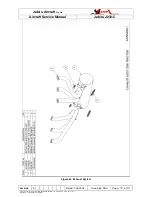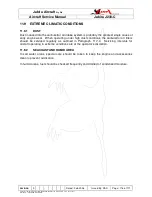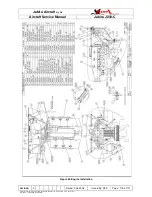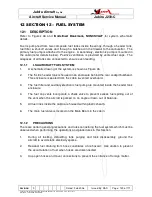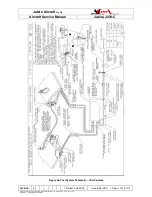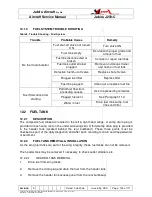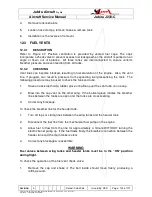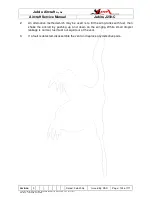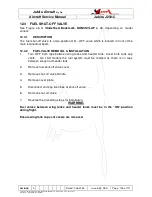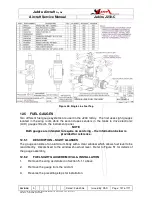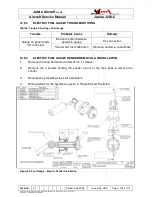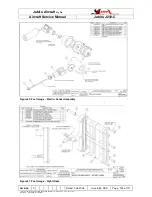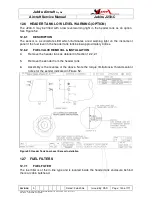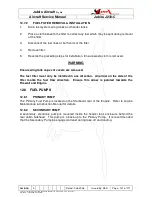
Jabiru Aircraft
Pty Ptd
Aircraft Service Manual
Jabiru J230-C
REVISION
0
Dated : Feb 2006
Issued By: RAS
Page: 123 of 171
L:\files\Technical_manuals\J230_J430\J230.J430_Work_files\J230-C_Tech_Rev_1.doc
Print Date: 14/01/2009 4:41:00 PM
4.
Remove tank restraints.
5.
Loosen hose clamps, remove hoses & remove tank.
6.
Installation is the reverse of removal.
12.3 FUEL VENTS
12.3.1
DESCRIPTION
Refer to Figure 47. Positive ventilation is provided by vented fuel caps. The caps
incorporate a check valve to prevent excess fuel leakage when the aircraft is parked on an
angle or flown out of balance. All three tanks are interconnected to ensure uniform
breather pressure and even feeding from all tanks.
12.3.2
CHECKING
Vent lines can become blocked, resulting in fuel starvation of the engine. Also, the vent
line, if plugged, can result in pressure from expanding fuel pressurising the tank. The
following procedure may be used to check the tank and tube.
1.
Have an assistant hold a rubber glove or balloon over the vent tube on one cap.
2.
Blow into the cap vent on the other wing. If the balloon/glove inflates the breather
lines between the tanks are open and the tanks are cross-feeding.
3.
Correct any blockage.
To check the breather line for the header tank:
1.
Turn off taps or clamp lines between the wing tanks and the header tank.
2.
Disconnect the fuel line from the mechanical fuel pump on the engine.
3.
Allow fuel to flow from the line for approximately a minute WITHOUT turning the
electric boost pump on. If the fuel flows freely the breather connection between the
header tank and the main tanks is clear.
4.
Correct any blockage & reassemble.
WARNING
Fuel valves between wing tanks and header tanks must be in the “ON” position
during flight.
To check the operation of the fuel vent check valve:
1.
Remove the cap and shake it. The ball inside should move freely, producing a
rattling sound.


